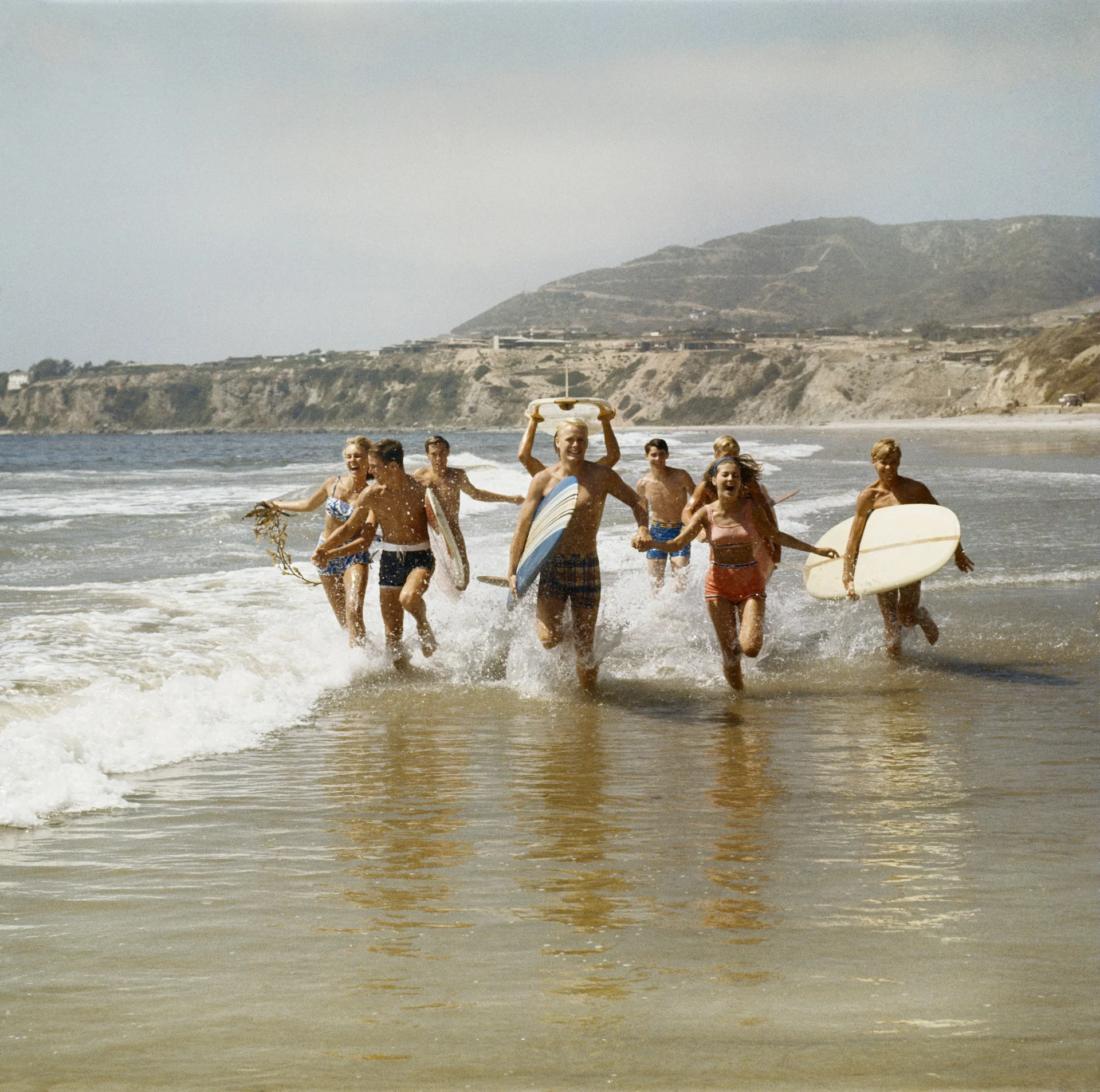
We might be "gone surfing,” but you can always find us right here!

When you think of surfing, you might imagine sun-soaked beaches, tanned bodies, and carefree spirits riding the waves. But surf culture is more than just a stereotypical surfer image; it’s a rich, vibrant community with a deep history and unique way of life.
This blog post will dive into the essence of surf culture, exploring its roots, the various types of surfing, the diversity within the community, and the profound connection surfers share with the ocean. Whether you’re new to the waves or an emerging pro, you’ll gain a deeper appreciation for what makes surfing culture so special.
To truly understand surfing lifestyle, we must delve into its origins and the factors that have shaped it over the years. The roots of surf culture are deeply embedded in history, dating back centuries, and have evolved significantly to become the global phenomenon it is today.
Surf culture can trace its origins back to ancient Polynesia, where the sport of surfing was both a form of art and a spiritual practice. This heritage has evolved over centuries, influencing modern surf communities around the globe.
From the pristine beaches of Hawaii to the bustling shores of California, surfing has grown into a worldwide phenomenon. The post-World War II era saw a significant boom in the popularity of surfing, particularly in Southern California. This period gave birth to the iconic image of the “beach bum” and laid the foundation for what we now recognize as surf culture.
The hard-working ethos of the post-war generation contrasted sharply with the emerging surf aesthetic. While the “Greatest Generation” focused on rebuilding, the younger crowd sought freedom and adventure on the waves. This generational shift helped establish the culture of surfing as a lifestyle choice, emphasizing leisure and a deep connection with nature.
Surf culture is not a monolith; it’s a diverse and inclusive community that welcomes everyone from beginners to experts. This diversity is one of the many aspects that make surf culture so vibrant and dynamic.
There are various types of surfing, each attracting different surfer types. From longboarding to shortboarding, stand-up paddleboarding to big wave surfing, each style brings its own unique challenges and rewards. Understanding these differences can help you find your niche within the surfing world.
Institutions like the Surfing Heritage and Culture Center play a crucial role in preserving and celebrating the history and evolution of surfing. These centers offer a wealth of knowledge and resources, showcasing the deep roots and vibrant development of surf culture.
The location where you surf significantly influences your experience and understanding of surf culture. Different regions offer unique waves, communities, and traditions that contribute to the global tapestry of surfing.
Waikiki, with its gentle, warm waves and welcoming community, is a cornerstone of surf culture. It’s a place where beginners can learn the basics and seasoned surfers can perfect their technique. The unique charm of Waikiki surfing lessons lies in the blend of exhilarating waves, beautiful beach settings, and expert instruction.
Maui also holds a special place in surf culture. Known for its powerful waves and stunning scenery, Maui offers a different but equally captivating surfing experience. The island’s surf spots attract surfers from around the world, contributing to its rich beach culture.
The North Shore of Oahu is legendary for its big waves and challenging conditions. This area is a proving ground for the world’s best surfers and a key location in the history of surfing. The North Shore embodies the adventurous spirit of surf culture.
Surfers wear whatever they want, but in Hawaii and Waikiki, you’ll often see relaxed, light-fitted clothing. The surf style is distinctive and relaxed, blending practicality with a laid-back vibe. Most importantly, it’s the love for nature and the ocean that unites us, and that’s always in style.
Surf culture extends far beyond the act of riding waves. It has a profound influence on various aspects of life, including music, art, and media. Understanding this impact can deepen your appreciation for the culture of surfing.
Surf culture has significantly influenced music, art, and media. Bands like The Beach Boys brought surf music to the mainstream, while surf movies and literature have inspired generations of wave riders. This cultural impact extends beyond the beach, shaping popular perceptions and trends.
Surfing has always had an element of rebellion, challenging societal norms and embracing a free-spirited lifestyle. This counter cultural aspect has drawn many to the waves, seeking both physical thrills and a deeper connection with nature.
For many, surfing is more than a sport; it’s a spiritual practice. The connection to the ocean fosters a sense of mindfulness and respect for the environment. Surfers often lead the charge in environmentalism, advocating for the protection of our oceans and beaches.
The sense of community in surf culture is strong. Surfers bond over shared experiences and mutual respect for the ocean. This tribalism creates a supportive network, enhancing the overall surfing experience.
Surfers have historically been environmentalists by nature. Their deep connection to the ocean drives a commitment to preserving and protecting marine environments. Beach clean-ups and support for organizations like The Surfrider Foundation are common among surfers.
Despite the commercialization of surfing, many surfers maintain a stance against consumer culture. They prioritize experiences and environmental stewardship over material possessions, embodying a modern counterculture.
Bringing together all the elements discussed, surfing culture is a complex and multifaceted phenomenon. It encompasses not just the act of surfing but a whole lifestyle and set of values that influence how surfers interact with the world around them.
Mastering surfing techniques and developing a personal style is a crucial part of integrating into surf culture. Lessons and consistent practice can help surfers improve their skills and enjoy the sport more fully.
For beginners, understanding the fundamentals of wave reading, take-offs, and surfing etiquette is essential. Professional instruction can accelerate learning and reduce the risk of injury.
As surfers progress, they can explore advanced techniques such as carving, cutbacks, and aerials. These moves require a deeper understanding of wave dynamics and significant practice.
In conclusion, surf culture is a rich tapestry of history, community, and passion for the waves. It’s a lifestyle that transcends mere sport, offering a unique blend of spirituality, rebellion, and environmentalism. Whether you’re drawn to the surf style, or eager to learn more about what is surf culture, there’s a place for you in our community!
No matter your surfing level, book your surf lesson in Waikiki with Gone Surfing Hawaii today for improved results and a fun time. Embrace the waves and become part of the enduring legacy of surf culture.
© 2014 Gone Surfing Hawaii. All Rights Reserved. // CALL 8 0 8 . 4 2 9 . 6 4 0 4 // TEXT 808.207.8810 info@gonesurfinghawaii.com